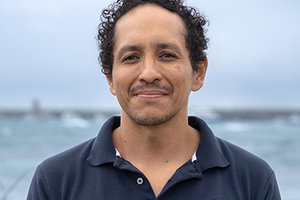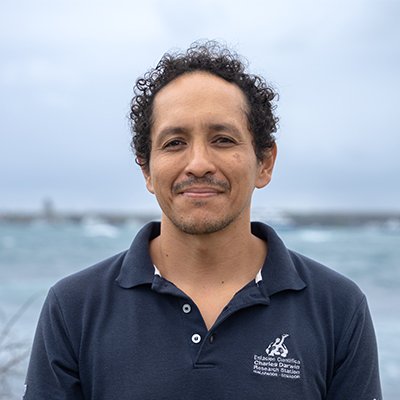
Through the shore of the bigger islands of our archipelago we have several friends that build the beautiful landscape that we use as sustenance of our lives. In the coastal zone, and some part of the arid zones, there are these reptiles that are part of the cycle of life that here occurs.
The first time that I came to the islands, I did not know about the big biodiversity that Galapagos owns. My knowledge was limited by some landscapes postcards, sea lions and blue footed boobies. So, in my first’s expeditions on the different places of the Santa Cruz Island, I heard some rugged noises in the base of the bushes of the paths. My first impression, as someone that has grew up in a city, was that there were some kind of frightened snakes or even mice. It was after the explanation of my guide that I learned and realized that the majority of these noises were generated by the lizards of the Galapagos Islands.
According to the taxonomic database of the Charles Darwin Research Station CDRS for the Galapagos, there are nine species of lizards, all of them are unique in the world, so endemic for the richness of the islands. Six of these are Single Island Endemic, it means that they are confined to a specific island, consequently it reflects to their common names. They are tiny insectivores from 15 to 30 cm sized (Swash, Still, and Lewington 2005). The bigger ones that I have seen have the size of a normal notebook, and I have had the honor to see the one of Santa Cruz, Floreana and San Cristobal specie. The bigger ones are the males and are characterized by a black patch under the head and the females are characterized by having orange cheeks and they are tinier than the half of the adult male.

As always, more attention has been put and more studies done on animals and plants that have bigger threats. According to the IUCN Red List, some of the lizards are categorized as near threatened and others asvulnerable, for example the ones of Española and San Cristobal (Datazone, CDRS); that is why it is important to evaluate the actual behavior, change of habitat, populations, and different indicators that secure the health of these animals.
It is true that you can easily find, with more probability, some individuals in the wildlife places, like the photos examples in Figure 1. But what about the populations settlements?
The vulnerability of these reptiles most be meditated and considered. As an outcome of this reconsideration, some question will come: what could we do to protect the important biodiversity of the archipelago? The dare starts with a simple and tiny trash of a chew gum at the gardens of the CDRS, to the impact that recalls in the underneath of Figure 2, where a lizard is surrounded by a big amount and type of trash.

Our CDRS is an ecological place, well kept, and has maintenance every day. Even with this care, we found, as in Figure 1, some trash near the lizards. More parlous, approximately 2 Km. away in the settlement of Sta. Cruz (Figure 3.), we found the sad picture of the bottom part on the Figure 2. To wind up my tale, I infer that as we live in one of the most beautiful paradise of the world is our responsibility to take care of it. It is not fear to our community, and to our children, that in the middle of a downtown we have an open dump, and even more disturbing: the fact that we found this unique animals living in these places.







